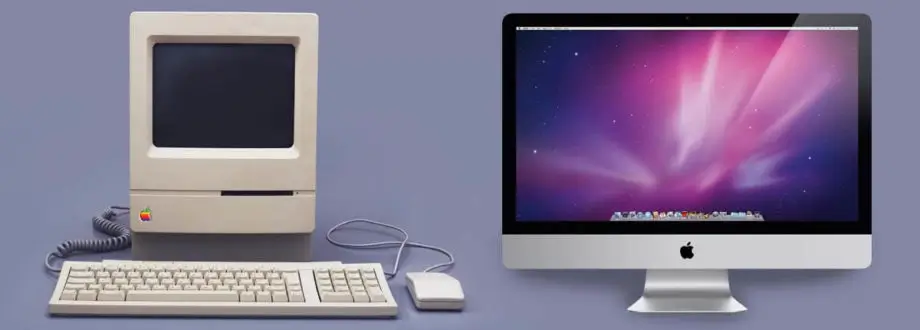We Explore Two Decades of Incredible Change
There’s no doubt that digital technology has had a huge impact on the way that we work. Advancements in technology have encouraged seismic changes in every industry, and graphic design is no different.
The evolution of graphic design has seen increased creativity and more investment alongside those big technological advances. Now, with those two decades behind us, it’s possible to look back and see just how far the industry has come in such a relatively short space of time.
The power of evolving technology
Technology has completely changed the way that graphic designers create stunning visuals. Programs like Adobe Photoshop and Adobe Illustrator are now at the forefront of graphic design, which has led to increasingly sophisticated work that may have seemed almost impossible in the ‘90s.
Computers are more powerful than ever before, and our handheld devices have changed the way both designers and customers view graphics and interact with web platforms. We are also just dipping our toes into the water of virtual reality, which has the potential to revolutionise graphic design once more.
The rise of the world wide web
We can’t talk about graphic design without talking about the internet. 20 years ago in the UK, computers were only just becoming a household essential. Websites were incredibly basic, and their graphics were experimental and unrefined. Now though, it’s a totally different story. Companies focus most of their marketing efforts online, and graphic design as a professional service has risen to prominence as a result.
Bigger budgets and a focus on results
The internet is now the main source of marketing and exposure, and as well as (or instead of) focusing their efforts on print and the more traditional marketing channels, businesses also need to make sure their web and social graphics are up to scratch.
As a result, there’s been an increase in investment and analysis in the niche. Graphic design encompasses so much more than it did 20 years ago, and this has led to a huge increase in its value – and essentially, an increase in the amount of money that these firms are willing to plough into strong visuals!
Companies now have the ability to analyse and review the type of content and graphics that are making more of an impression. It’s so easy to quickly figure out what’s working and what isn’t, leading to much more successful campaigns and extra confidence in graphic design as a means of attracting more interest in a brand.
An industry of freelancers
Two decades ago, most companies would have preferred to employ an in-house graphic designer – but nowadays, these businesses are happy to outsource. Many now hire independent designers, and will happily use different design teams for different campaigns, depending who is the best fit for the job.
This way of working hasn’t been detrimental to the design industry. In fact, it’s brought many positives to the sector. Independent graphic designers work with a large range of companies with all kinds of budgets, and are therefore able to build up a diverse and exciting body of work that can help them prove their worth to potential clients. And as the name suggests, working as an independent designer often leads to greater freedom; freedom to create, freedom to experiment, and freedom to push the boundaries to develop something truly unique!
